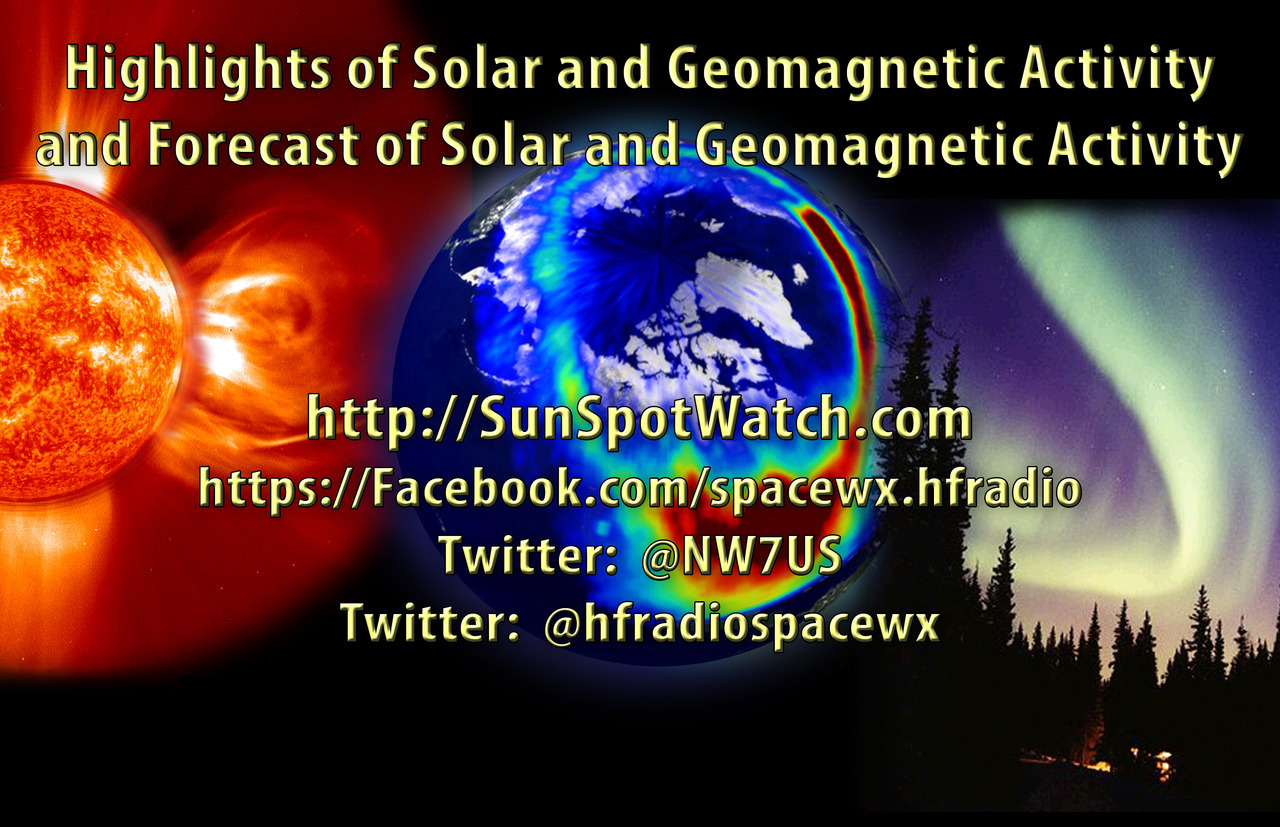 LHS Episode #226: Short and Sour
LHS Episode #226: Short and Sour
 Welcome to the latest episode of Linux in the Ham Shack! This is our short segment show just before Hamvention 2018. Our crowd funding campaign was successful and we thank you so very much for that. We also look forward to seeing you in Xenia. Our topics this week include the Amateur Radio Parity Act, Morse code keyboards for your Android device, CubeSat launches, Ubuntu, Ubuntu and Ubuntu. All the best and thanks for listening.
Welcome to the latest episode of Linux in the Ham Shack! This is our short segment show just before Hamvention 2018. Our crowd funding campaign was successful and we thank you so very much for that. We also look forward to seeing you in Xenia. Our topics this week include the Amateur Radio Parity Act, Morse code keyboards for your Android device, CubeSat launches, Ubuntu, Ubuntu and Ubuntu. All the best and thanks for listening.
73 de The LHS Crew
Russ Woodman, K5TUX, co-hosts the Linux in the Ham Shack podcast which is available for download in both MP3 and OGG audio format. Contact him at russ@bluecows.com.
 The ham radio learning curve!
The ham radio learning curve!
Here is a personal learning curve for me regarding this hobby....many times I have looked at the shack and said "there are some items here that I seem to be not using and are collecting dust" My thought is to convert those items into ham bucks by selling. Having said that here is my learning curve, there have been way to many times I have sold an item or two or three and then a short time later was in dyer need of said sold item. In some cases I have had to purchase once again the same item I sold. My learning curve or my take away is just hold onto it for a little bit longer as you may end up needing it again!
Mike Weir, VE9KK, is a regular contributor to AmateurRadio.com and writes from New Brunswick, Canada. Contact him at ve9kk@hotmail.com.
 Weekly Propagation Summary – 2018 May 14 16:10 UTC
Weekly Propagation Summary – 2018 May 14 16:10 UTC
Here is this week’s space weather and geophysical report, issued 2018 May 14 0629 UTC.
Highlights of Solar and Geomagnetic Activity 07 – 13 May 2018
Solar activity was very low throughout the period and no reportable events were observed.
No proton events were observed at geosynchronous orbit.
The greater than 2 MeV electron flux at geosynchronous orbit reached very high levels on 9-11 May and high levels were obseverd throughout the remainder of the period.
Geomagnetic field activity was at quiet to active levels on 07-09, 11-12 May due to the influence of a negative polarity coronal hole/high speed solar wind stream. Quiet to unsettled levels were observed on 10 May, and conditions were quiet on 13 May.
Forecast of Solar and Geomagnetic Activity 14 May – 09 June 2018
Solar activity is expected to persist at very low levels throughout the outlook period.
No proton events are expected at geosynchronous orbit.
The greater than 2 MeV electron flux at geosynchronous orbit is expected to reach very high levels on 05-07 Jun with high levels expected on 14-26 May and 02-04, 08-09 Jun. Moderate flux levels are likely though the remainder of the outlook period.
Geomagnetic field activity is expected to reach G2 (Moderate) geomagnetic storm levels on 02 Jun with G1 (Minor) geomagnetic storms levels expected on 17 May and 01 Jun due to the influence of multiple coronal hole/high speed solar wind streams. Active conditions are expected on 18 May and 03-05 Jun and generally quiet or quiet to unsettled conditions are expected to prevail for the remainder of the outlook period.
Don’t forget to visit our live space weather and radio propagation web site, at: http://SunSpotWatch.com/
Live Aurora mapping is at http://aurora.sunspotwatch.com/
If you are on Twitter, please follow these two users: 1. https://Twitter.com/NW7US 2. https://Twitter.com/hfradiospacewx
Check out the stunning view of our Sun in action, as seen during the last five years with the Solar Dynamics Observatory (SDO): https://www.youtube.com/watch?v=zXN-MdoGM9g
= = = = =
BOOK SALE: Space Weather and Sun Science – get these from Amazon, and help us stay online!
NOTICE: When you buy this (or any item after starting with this link), you are helping us keep our SunSpotWatch.com and other resources “on the air” (up and running!). In other words, you are helping the entire community. So, check out this book:
Here is the link to Amazon: http://g.nw7us.us/fbssw-aSWSC
We’re on Facebook: http://NW7US.us/swhfr
Visit, subscribe: NW7US Radio Communications and Propagation YouTube Channel
 Kit building time.
Kit building time.
 |
| Almost done |
Mike Weir, VE9KK, is a regular contributor to AmateurRadio.com and writes from New Brunswick, Canada. Contact him at ve9kk@hotmail.com.
 ICQ Podcast Episode 266 – Good Set of Headphones
ICQ Podcast Episode 266 – Good Set of Headphones
In this episode, Martin M1MRB is joined by Chris Howard M0TCH, Martin Rothwell M0SGL, Dan Romanchik KB6NU and Ed Durrant DD5LP to discuss the latest Amateur / Ham Radio news. Colin M6BOY rounds up the news in brief, and this episode’s feature is - A good set of Headphones.
- 50 MHz Allowed in Lebanon
- Temporary German Allocation on 70MHz
- Kettering Student's Young Achievers Award
- Ham Radio Regulatory Changes in Eire
- The Royal Mint Experience
- Special RSL for Royal Wedding
- GDPR and Amateur/Ham Radio Clubs
Colin Butler, M6BOY, is the host of the ICQ Podcast, a weekly radio show about Amateur Radio. Contact him at info@icqpodcast.com.
 FCC’s Pirate Purge Continues
FCC’s Pirate Purge Continues

For some reason, the FCC continues to pour money into its hell-bent roundup of FM pirate broadcasters! I suspect much of this 'tough stance' is more politically motivated than for the reasons that they state, but the FCC seems to have plenty of will-power and the necessary funding ... it's too bad that they couldn't put the same zeal into getting on top of or making a start on the huge growing noise problem throughout the radio spectrum. I guess rounding up pirates is much easier than tackling the far more important noise issues, now growing so rapidly that many radio amateurs just throw up their hands in surrender and close up shop for good. Even commercial users of the spectrum are being negatively affected by the growing noise floor, as the growing Internet of Things connected devices produce even more radio crud.
It now seems that the FCC may get a further boost in its crackdown if a new bipartisan proposed federal law becomes reality. A May 9, 2018, article in Radio World reports the tabling of the new bill in the US Congress called the PIRATE Act or "Preventing Illegal Radio Abuse Through Enforcement Act". It would also be nice to see the PAIN Act (Preventing All Illegal Noise) in the RF spectrum but I see no Washington appetite for this much-needed FCC oversight.
The continued obsession for rounding up FM pirate broadcasters is fascinating in its own right. "It is time to take these pirates off the air by hiking the penalties and working with the Federal Communication Commission on enforcement", stated Rep. Leonard Lance (R-NJ).
"As reported in Radio World, the PIRATE Act proposes to hike the fine for violations to as much as $100,000 per day, with a maximum fine of $2 million. The rules currently allow the FCC to impose a maximum daily penalty of about $19,200 per day. At a Congressional hearing on the bill in March, New York State Broadcasters Association President David Donovan told lawmakers that illegal operators are undermining the nation’s Emergency Alert System, causing invasive and insidious interference, pose potential public health problems due to overexposure to radio frequency radiation, and interfere with airport communications."
It is apparent from reading investigative reports, that each acted-upon complaint requires a substantial investment of time and money as in the April 24 Notice of Apparent Liability for a case in Paterson, New Jersey ... it seems that NJ and NY are 'pirate hotbeds'. By the end of the investigation, a team of fully-equipped FCC field agents had visited the pirate's site(s) on eight different occasions, a considerable investment in time, energy and money. In the end, a $25,000 penalty has been proposed for the offender.
I am not a fan of illegal pirate radio broadcasting in any form but the reasons stated by the FCC for the ongoing pirate purges seem somewhat shaky. In all of the investigative reports that I've read, I have yet to find any that were reported to cause "interference with airport communications" and I question the assertion that the low power levels used by most pirates are going to "pose potential public health problems due to overexposure to radio frequency radiation". One more likely reason may be the strong lobby pressure from broadcasters who see the possible loss of advertising revenue. I'm sure that many Washington electees receive healthy campaign donations from state broadcasters as well.
Although many pirate radio ops seemingly solicit advertising revenue, overall it can't be much of a threat to mainstream broadcasters. Is it just the NAB Washington lobby that is fuelling the FCC pirate craze or is it muscle-flexing from the new administration, wanting to look tough on "crime" and radio-pirates are just easy low-hanging fruit? I suspect that it may be more of the latter.
The FCC's 'Pirate Action' postings make for interesting reading as does the fascinating Westword article on pirate radio activity in Ward, Colorado, and the recent attempted FCC take-down of stations in operation since 1997!
There's no question that a lot of FCC resources are being used to eliminate unlicenced QRM. What will it take to see the same attack on unlicenced QRN as well?
Steve McDonald, VE7SL, is a regular contributor to AmateurRadio.com and writes from British Columbia, Canada. Contact him at ve7sl@shaw.ca.
 AmateurLogic 117: Sounds of the Studio
AmateurLogic 117: Sounds of the Studio
AmateurLogic.TV Episode 117 is now available for download.
How would you describe a particular artifact in someone’s transmit audio so they understand what you are hearing? In Sounds of the Studio, we listen to some common audio problems and effects to see what everyone calls them.
Peter shows us some new microcontroller boards designed especially for python. Emile catches a ride on the Ham Shack Hotline, and it’s cheap too.
1:23:56
George Thomas, W5JDX, is co-host of AmateurLogic.TV, an original amateur radio video program hosted by George Thomas (W5JDX), Tommy Martin (N5ZNO), Peter Berrett (VK3PB), and Emile Diodene (KE5QKR). Contact him at george@amateurlogic.tv.
















